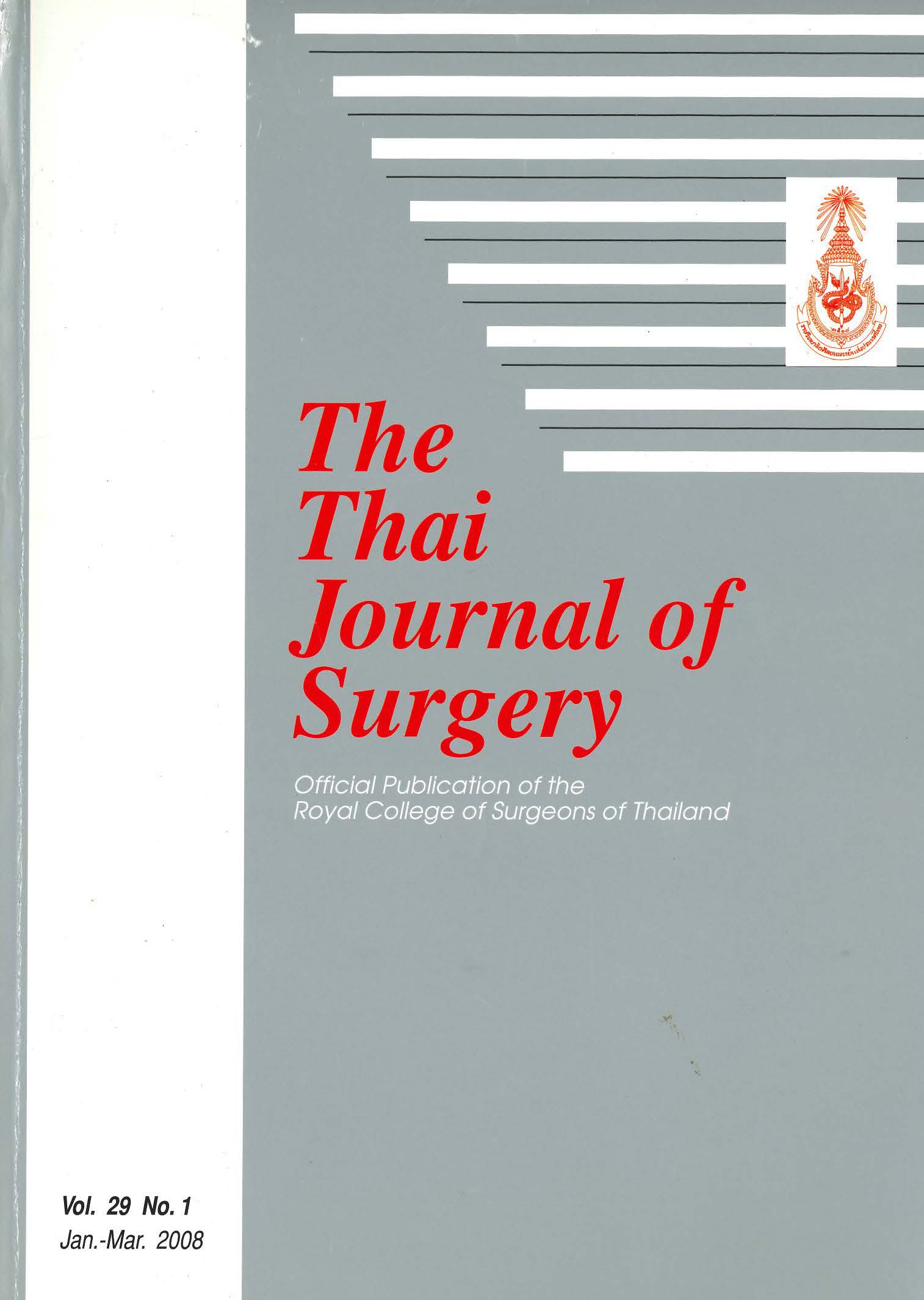Necrotizing Fasciitis and Myonecrosis of Both Legs due to Aeromonas: Two-Case Report
Abstract
Introduction: Aeromonas is a facultative, anaerobic Gram-negative bacillus. It has been reported that this bacterium is responsible for opportunistic infections in patients with compromised immune function due to an underlying disease. The infection usually occurs in one leg and following direct wound contact with water. These two reported cases had necrotizing fasciitis and myonecrosis of both legs without history of trauma but they presented with septicemia.
Case report;
Case 1: A 63-year-old man presented with severe right leg pain, fever and septic shock for 1 day. His underlying diseases included diabetes mellitus, hypertension and aplastic anemia. Right leg was markedly swollen with ecchymosis. X-ray demonstrated air in the muscle and subcutaneous fat. The diagnosis was gas gangrene and right AK amputation was performed. At post-operative day 1 his left leg became red, swollen and painful similar to the right leg. The patient did not want to have his left leg amputated. Wide debridement and fasciotomy were performed. Tissue culture revealed Aeromonas hydrophilla. With fever and progressive myonecrosis of the left leg, left AK amputation was then performed on post-operative day 11 with an uneventful recovery.
Case 2: A 47-year-old man presented with pain of both legs for 2 days, more on the left leg, and septic shock. Underlying diseases included diabetes mellitus, hepatitis C and cirrhosis. Ultrasound and X-ray of both legs showed no evidence of deep vein thrombosis or air in both legs. Debridement and fasciotomy were performed in both legs. Hemoculture and tissue culture revealed Aeromonas sobria. With daily open dressing, he had an uneventful recovery.
Conclusions: Necrotizing fasciitis and myonecrosis of both legs due to Aeromonas are not common and they result in high morbidity and mortality. Early and aggressive surgical intervention should be implemented.
References
2. Markov G, Kirov G, Lyutskanov V, Kondarev M. Necrotizing fasciitis and myonecrosis due to aeromonas hydrophila. Wounds 2007;19:223-6.
3. Hiransuthikul N, Tantisiriwat W, Lertutsahakul K, Vibhagool A, Boonma P. Skin and soft-tissue infections among Tsunami survivors in southern Thailand. Clin Infect Dis 2005:41:e93-e96.
4. Furusu A, Yoshizuka N, Abe K, et al, Aeromonas hydrophila necrotizing fasciitis and gas gangrene in a diabetic patient on haemodialysis. Nephrol Dial Transplant 1997;12:1730-4.
5. Borger van der Burg, et al. Aeromonas hydrophila necrotizing fasciitis: a case report. J Bone Joint Surg Am 2006;88:1357-60.
6. Gold WL, Salit IE. Aeromonas hydrophila infections of skin and soft tissue: report of 11 cases and review. Clin Infect Dis 1993;16:69-74.
7. Itoh H, Kuwata G, Tateyama S, et al. Aeromonas sobria infection with severe soft tissue damage and segmental
necrotizing gastroenteritis in a patient with alcoholic liver cirrhosis. Pathol Int 1999:49:541-6.
8. Vally H, Whittle A, Cameron S, Dowse GK, Watson T, Outbreak of aeromonas hydrophila wound infections associated with mud football. Clin Infect Dis 2004:38:1084-9.
9. Daily OP, Joseph SW, Coolbaugh JC, et al. Association of Aeromonas sobria with human infection. J Clin Microbiol
1981;13:769-77.
10. Janda JM, Abbott SL. Evolving concepts regarding the genus aeromonas: an expanding panorama of species,
disease presentations, and unanswered questions. Clin Infect Dis 1998;27:332-44.
Downloads
Published
How to Cite
Issue
Section
License
Articles must be contributed solely to The Thai Journal of Surgery and when published become the property of the Royal College of Surgeons of Thailand. The Royal College of Surgeons of Thailand reserves copyright on all published materials and such materials may not be reproduced in any form without the written permission.



